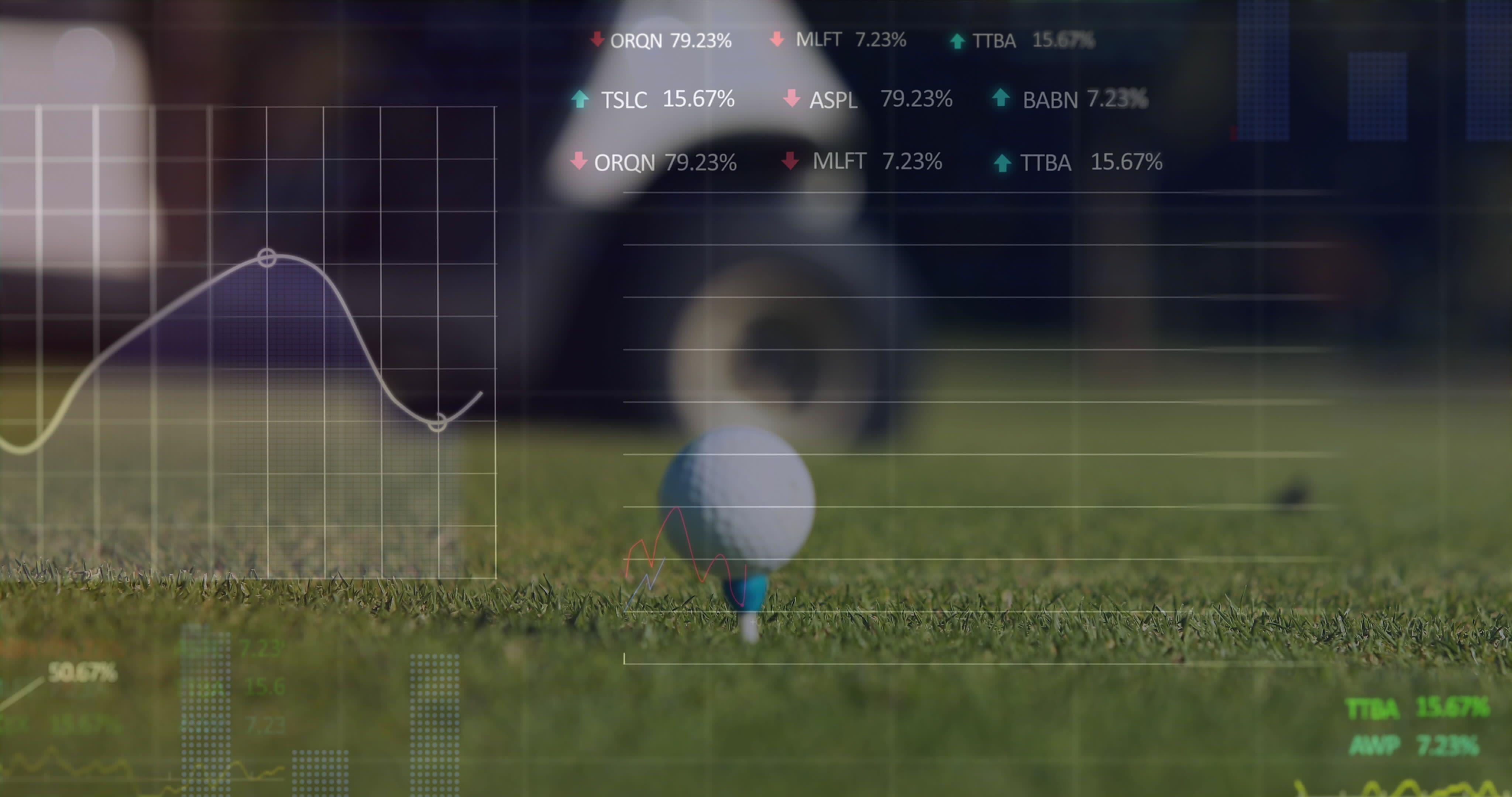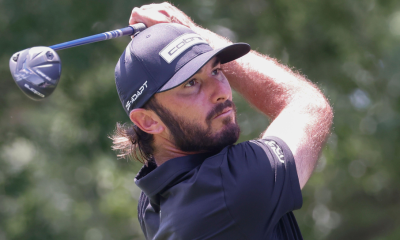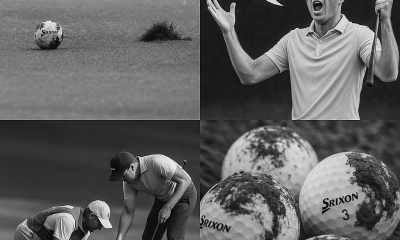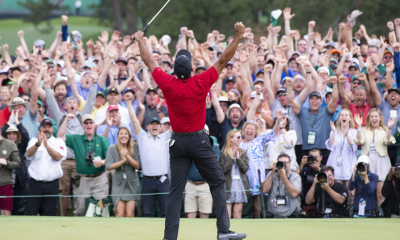Opinion & Analysis
Embracing AI and machine learning in the golf industry: A PGA Professional’s perspective

As a PGA Professional for 16 years and a nearly three-decade veteran of the golf industry, I have dedicated my career to understanding and enhancing the game through coaching, equipment selection, and course management. Throughout this time, I’ve witnessed remarkable advancements, but none have been as transformative as the rise of artificial intelligence (AI) and machine learning. These technologies are changing how we play the game and revolutionizing the entire golfing experience.
At the recent PGA Merchandise Show in Orlando, I had the opportunity to talk with Brent Neville, the CEO of ShotSense Golf and the creator of a remarkable and what I feel will be a game-changing app for golfers.
Brent is a high-tech industry leader with 15 years of experience in engineering, geospatial analysis, and AI-driven analytics. He is also the real deal: a Notre Dame grad with a BS in Mechanical Engineering and an MBA in Finance and Marketing from Northwestern’s Kellogg School of Management. He and his team at ShotSense Golf are revolutionizing on-course decision-making with their free iOS app, which delivers personalized shot strategies for every shot on any course.
Brent and I have had lengthy discussions about AI and LLMs (large language models), how they can help society in general, and their applications in golf. Below is some of what Brent shared with me.
1. AI and Training Data
Artificial Intelligence, particularly large language models (LLMs), depends on the data it learns from. These models work by predicting the next word in a sequence based on patterns they recognize. For example, if a model often sees “cat” followed by “whisker,” it will likely predict “whisker” after “cat” in the future. This approach is effective for predictable data, like the English language or consistent human behaviors, since these patterns tend to repeat.
For instance, a machine learning model can predict dentist appointments by analyzing historical data, such as patient turnout on different days of the week. Google Maps uses similar concepts by examining large amounts of location and traffic data to forecast conditions. However, predictions can become tricky when individual choices deviate from common patterns, like someone opting for a different route.
In sports like golf, the complexity increases significantly. Each golf shot is influenced by many factors, such as course layout, weather conditions, and a player’s unique situation on that particular day. Unlike language, where patterns are more stable, predicting a golf shot is much more challenging because every shot is its own distinct scenario. This is why the ShotSense Golf method focuses on optimization rather than straightforward machine learning—there are just too many changing factors to rely solely on past data for accurate predictions.
2. Brody and Strokes Gained
A great example of how analytical methods have evolved is seen in the progression of statistical models in sports. The book “Moneyball,” released around 2003, changed how baseball teams evaluate players by introducing innovative metrics like WAR (wins above replacement). A decade later, “Astroball” built on this by using advanced computing and a better understanding of data correlations to provide even deeper insights.
In golf, Mark Broadie’s book Every Shot Counts introduced the strokes gained concept. This concept uses average data sets to evaluate performance from different distances, such as saying it takes about 2.82 strokes to reach the green from 100 yards on the fairway. However, this approach misses key factors, such as wind direction or the difficulty of hitting a small green at a challenging course like TPC Sawgrass.
Broad averages were initially necessary because computing limitations prevented detailed analyses of every situation. Now, technology can handle millions of calculations quickly, allowing for more specific and context-driven evaluations. ShotSense Golf exemplifies this by using real-time data to analyze various shot scenarios, considering nuances that traditional strokes gained metrics might overlook—like whether being behind a tree gives a better shot opportunity than being in the rough.

Brent has experience working at an AI/ML startup and Microsoft. He highlights that the biggest challenge in AI is delivering real value. While large language models (LLMs) showcase significant productivity gains, applying them to specific industries, like golf, can be complex.
Simply adding AI to a problem is often ineffective. Defining the use case and determining if AI is genuinely needed is vital. Currently, there’s a trend of applying LLMs to everything, from chatbots for weather updates to rules of the game. However, the key is identifying valuable applications for AI. For instance, LLMs have proven helpful in summarizing golf notes.
In golf, AI can be categorized into two main areas: hitting the ball and strategy.
Hitting the Ball:
- Club Development: AI helps optimize club design using simulations, a practice that’s been around for over a decade.
- Swing Analysis: Many players are interested, but this requires extensive labeled data from successful swings, which is hard to gather.
- Launch Monitors: Use machine learning to analyze data and predict performance.
- Fitness Routines: AI can customize fitness plans by combining ML and LLM approaches.
Strategy:
- Rangefinders: Limited AI, mainly predictive models based on shot data.
- GPS Apps: Primarily for data display, offering little AI advantage.
- Course Management Tools: Often outdated, lacking AI integration.
- Hardware Tracking: Focuses on data collection, with basic analytics provided in apps.
AI is not a one-size-fits-all solution but can drive value in targeted applications. ShotSense Golf, for example, uses machine learning and optimization, similar to how Google Maps functions—efficiency improved through data-driven updates.
Reader, please support me by checking out my three weekly columns on RG.org. On Mondays, I present “The Starter,” which recaps the week gone by in golf. On Thursdays, I give you “Fairway Focus,” which previews the week to come in golf. And on Saturdays, I dish up the “Weekend Fore-cast,” a look at what’s on tap for the upcoming weekend.
Editor’s note: “My Take” will be an ongoing weekly series where Brendon shares his thoughts and opinions on various aspects of the game and industry. These are Brendon’s opinions and do not necessarily reflect those of GolfWRX, its staff, and its affiliates.
Opinion & Analysis
The 2 primary challenges golf equipment companies face

As the editor-in-chief of this website and an observer of the GolfWRX forums and other online golf equipment discourse for over a decade, I’m pretty well attuned to the grunts and grumbles of a significant portion of the golf equipment purchasing spectrum. And before you accuse me of lording above all in some digital ivory tower, I’d like to offer that I worked at golf courses (public and private) for years prior to picking up my pen, so I’m well-versed in the non-degenerate golf equipment consumers out there. I touched (green)grass (retail)!
Complaints about the ills of and related to the OEMs usually follow some version of: Product cycles are too short for real innovation, tour equipment isn’t the same as retail (which is largely not true, by the way), too much is invested in marketing and not enough in R&D, top staffer X hasn’t even put the new driver in play, so it’s obviously not superior to the previous generation, prices are too high, and on and on.
Without digging into the merits of any of these claims, which I believe are mostly red herrings, I’d like to bring into view of our rangefinder what I believe to be the two primary difficulties golf equipment companies face.
One: As Terry Koehler, back when he was the CEO of Ben Hogan, told me at the time of the Ft Worth irons launch, if you can’t regularly hit the golf ball in a coin-sized area in the middle of the face, there’s not a ton that iron technology can do for you. Now, this is less true now with respect to irons than when he said it, and is less and less true by degrees as the clubs get larger (utilities, fairways, hybrids, drivers), but there remains a great deal of golf equipment truth in that statement. Think about it — which is to say, in TL;DR fashion, get lessons from a qualified instructor who will teach you about the fundamentals of repeatable impact and how the golf swing works, not just offer band-aid fixes. If you can’t repeatably deliver the golf club to the golf ball in something resembling the manner it was designed for, how can you expect to be getting the most out of the club — put another way, the maximum value from your investment?
Similarly, game improvement equipment can only improve your game if you game it. In other words, get fit for the clubs you ought to be playing rather than filling the bag with the ones you wish you could hit or used to be able to hit. Of course, don’t do this if you don’t care about performance and just want to hit a forged blade while playing off an 18 handicap. That’s absolutely fine. There were plenty of members in clubs back in the day playing Hogan Apex or Mizuno MP-32 irons who had no business doing so from a ballstriking standpoint, but they enjoyed their look, feel, and complementary qualities to their Gatsby hats and cashmere sweaters. Do what brings you a measure of joy in this maddening game.
Now, the second issue. This is not a plea for non-conforming equipment; rather, it is a statement of fact. USGA/R&A limits on every facet of golf equipment are detrimental to golf equipment manufacturers. Sure, you know this, but do you think about it as it applies to almost every element of equipment? A 500cc driver would be inherently more forgiving than a 460cc, as one with a COR measurement in excess of 0.83. 50-inch shafts. Box grooves. And on and on.
Would fewer regulations be objectively bad for the game? Would this erode its soul? Fortunately, that’s beside the point of this exercise, which is merely to point out the facts. The fact, in this case, is that equipment restrictions and regulations are the slaughterbench of an abundance of innovation in the golf equipment space. Is this for the best? Well, now I’ve asked the question twice and might as well give a partial response, I guess my answer to that would be, “It depends on what type of golf you’re playing and who you’re playing it with.”
For my part, I don’t mind embarrassing myself with vintage blades and persimmons chasing after the quasi-spiritual elevation of a well-struck shot, but that’s just me. Plenty of folks don’t give a damn if their grooves are conforming. Plenty of folks think the folks in Liberty Corner ought to add a prison to the museum for such offences. And those are just a few of the considerations for the amateur game — which doesn’t get inside the gallery ropes of the pro game…
Different strokes in the game of golf, in my humble opinion.
Anyway, I believe equipment company engineers are genuinely trying to build better equipment year over year. The marketing departments are trying to find ways to make this equipment appeal to the broadest segment of the golf market possible. All of this against (1) the backdrop of — at least for now — firm product cycles. And golfers who, with their ~15 average handicap (men), for the most part, are not striping the golf ball like Tiger in his prime and seem to have less and less time year over year to practice and improve. (2) Regulations that massively restrict what they’re able to do…
That’s the landscape as I see it and the real headwinds for golf equipment companies. No doubt, there’s more I haven’t considered, but I think the previous is a better — and better faith — point of departure when formulating any serious commentary on the golf equipment world than some of the more cynical and conspiratorial takes I hear.
Agree? Disagree? Think I’m worthy of an Adam Hadwin-esque security guard tackle? Let me know in the comments.
@golfoncbs The infamous Adam Hadwin tackle ? #golf #fyp #canada #pgatour #adamhadwin ? Ghibli-style nostalgic waltz – MaSssuguMusic
Podcasts
Fore Love of Golf: Introducing a new club concept

Episode #16 brings us Cliff McKinney. Cliff is the founder of Old Charlie Golf Club, a new club, and concept, to be built in the Florida panhandle. The model is quite interesting and aims to make great, private golf more affordable. We hope you enjoy the show!
Opinion & Analysis
On Scottie Scheffler wondering ‘What’s the point of winning?’

Last week, I came across a reel from BBC Sport on Instagram featuring Scottie Scheffler speaking to the media ahead of The Open at Royal Portrush. In it, he shared that he often wonders what the point is of wanting to win tournaments so badly — especially when he knows, deep down, that it doesn’t lead to a truly fulfilling life.
View this post on Instagram
“Is it great to be able to win tournaments and to accomplish the things I have in the game of golf? Yeah, it brings tears to my eyes just to think about it because I’ve literally worked my entire life to be good at this sport,” Scheffler said. “To have that kind of sense of accomplishment, I think, is a pretty cool feeling. To get to live out your dreams is very special, but at the end of the day, I’m not out here to inspire the next generation of golfers. I’m not out here to inspire someone to be the best player in the world, because what’s the point?”
Ironically — or perhaps perfectly — he went on to win the claret jug.
That question — what’s the point of winning? — cuts straight to the heart of the human journey.
As someone who’s spent over two decades in the trenches of professional golf, and in deep study of the mental, emotional, and spiritual dimensions of the game, I see Scottie’s inner conflict as a sign of soul evolution in motion.
I came to golf late. I wasn’t a junior standout or college All-American. At 27, I left a steady corporate job to see if I could be on the PGA Tour starting as a 14-handicap, average-length hitter. Over the years, my journey has been defined less by trophies and more by the relentless effort to navigate the deeply inequitable and gated system of professional golf — an effort that ultimately turned inward and helped me evolve as both a golfer and a person.
One perspective that helped me make sense of this inner dissonance around competition and our culture’s tendency to overvalue winning is the idea of soul evolution.
The University of Virginia’s Division of Perceptual Studies has done extensive research on reincarnation, and Netflix’s Surviving Death (Episode 6) explores the topic, too. Whether you take it literally or metaphorically, the idea that we’re on a long arc of growth — from beginner to sage elder — offers a profound perspective.
If you accept the premise literally, then terms like “young soul” and “old soul” start to hold meaning. However, even if we set the word “soul” aside, it’s easy to see that different levels of life experience produce different worldviews.
Newer souls — or people in earlier stages of their development — may be curious and kind but still lack discernment or depth. There is a naivety, and they don’t yet question as deeply, tending to see things in black and white, partly because certainty feels safer than confronting the unknown.
As we gain more experience, we begin to experiment. We test limits. We chase extreme external goals — sometimes at the expense of health, relationships, or inner peace — still operating from hunger, ambition, and the fragility of the ego.
It’s a necessary stage, but often a turbulent and unfulfilling one.
David Duval fell off the map after reaching World No. 1. Bubba Watson had his own “Is this it?” moment with his caddie, Ted Scott, after winning the Masters.
In Aaron Rodgers: Enigma, reflecting on his 2011 Super Bowl win, Rodgers said:
“Now I’ve accomplished the only thing that I really, really wanted to do in my life. Now what? I was like, ‘Did I aim at the wrong thing? Did I spend too much time thinking about stuff that ultimately doesn’t give you true happiness?’”
Jim Carrey once said, “I think everybody should get rich and famous and do everything they ever dreamed of so they can see that it’s not the answer.”
Eventually, though, something shifts.
We begin to see in shades of gray. Winning, dominating, accumulating—these pursuits lose their shine. The rewards feel more fleeting. Living in a constant state of fight-or-flight makes us feel alive, yes, but not happy and joyful.
Compassion begins to replace ambition. Love, presence, and gratitude become more fulfilling than status, profits, or trophies. We crave balance over burnout. Collaboration over competition. Meaning over metrics.
Interestingly, if we zoom out, we can apply this same model to nations and cultures. Countries, like people, have a collective “soul stage” made up of the individuals within them.
Take the United States, for example. I’d place it as a mid-level soul: highly competitive and deeply driven, but still learning emotional maturity. Still uncomfortable with nuance. Still believing that more is always better. Despite its global wins, the U.S. currently ranks just 23rd in happiness (as of 2025). You might liken it to a gifted teenager—bold, eager, and ambitious, but angsty and still figuring out how to live well and in balance. As much as a parent wants to protect their child, sometimes the child has to make their own mistakes to truly grow.
So when Scottie Scheffler wonders what the point of winning is, I don’t see someone losing strength.
I see someone evolving.
He’s beginning to look beyond the leaderboard. Beyond metrics of success that carry a lower vibration. And yet, in a poetic twist, Scheffler did go on to win The Open. But that only reinforces the point: even at the pinnacle, the question remains. And if more of us in the golf and sports world — and in U.S. culture at large — started asking similar questions, we might discover that the more meaningful trophy isn’t about accumulating or beating others at all costs.
It’s about awakening and evolving to something more than winning could ever promise.





















